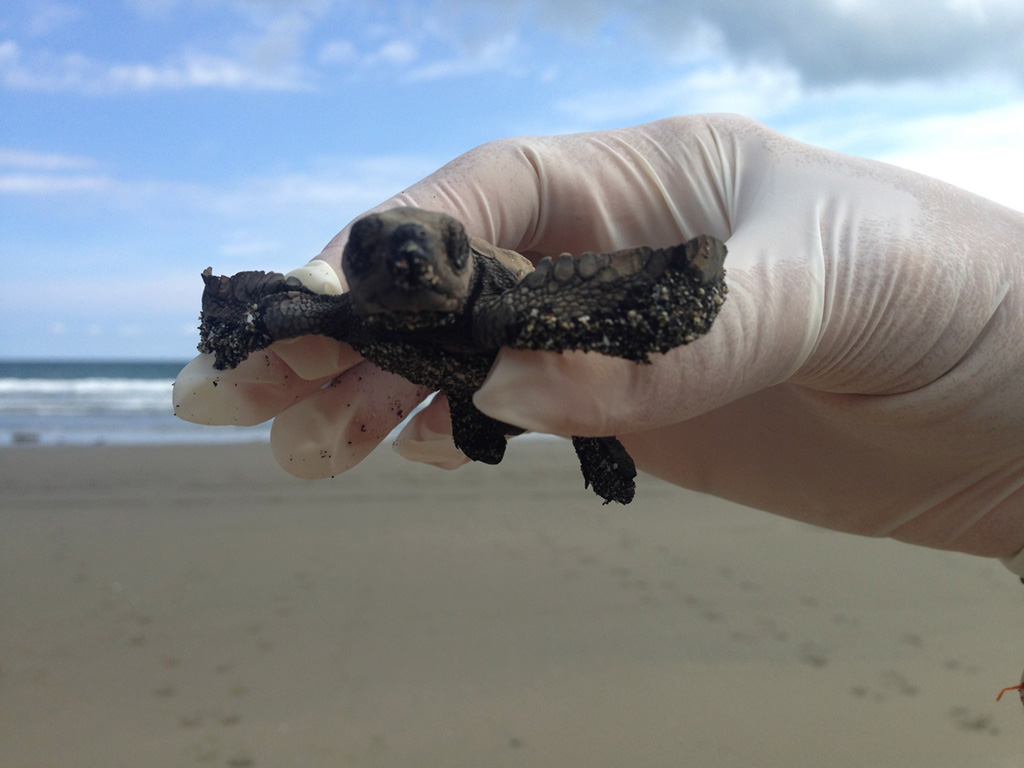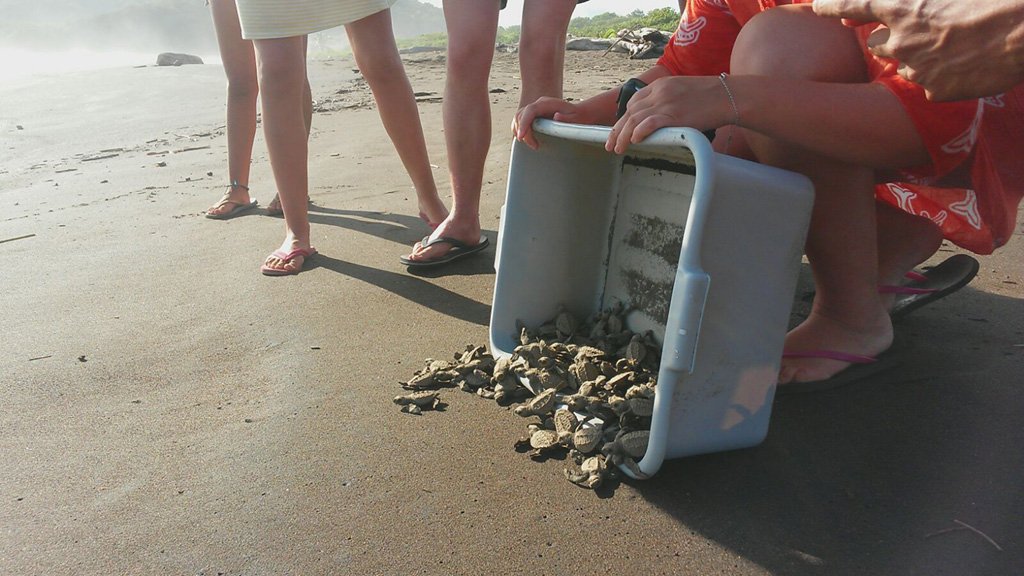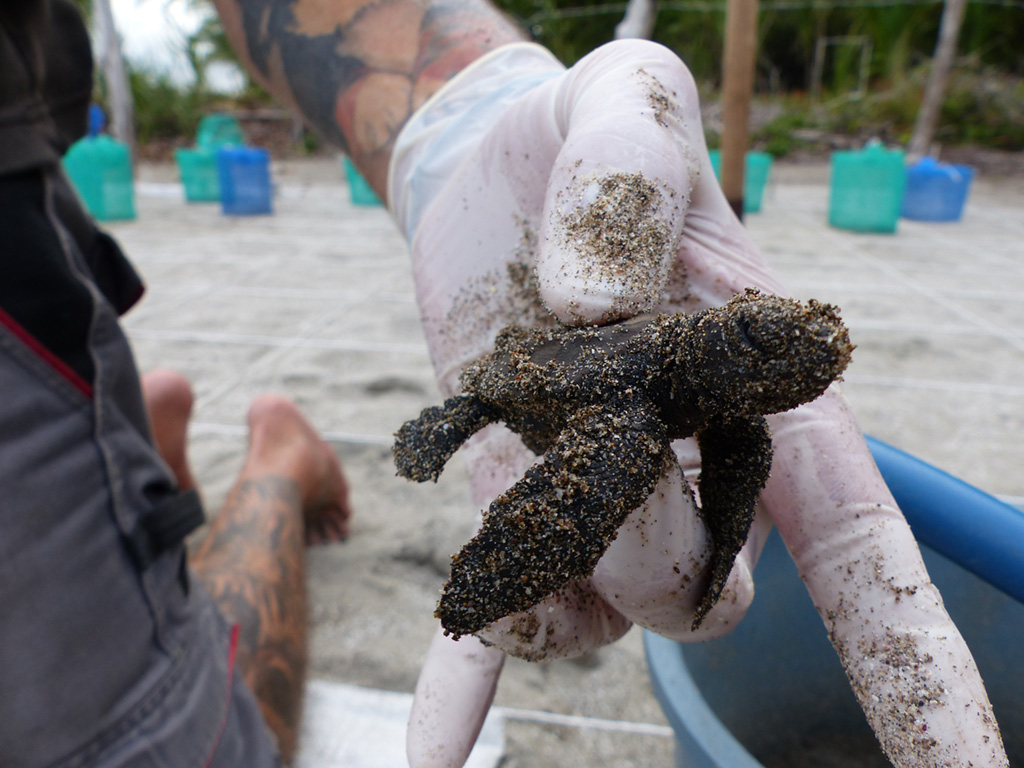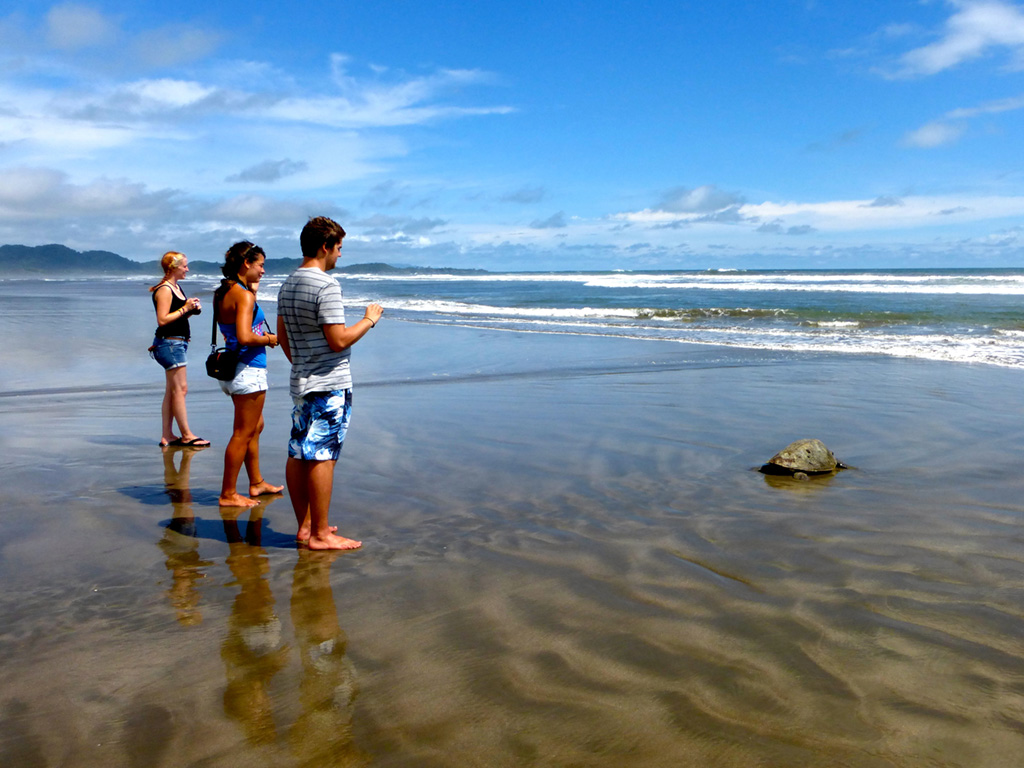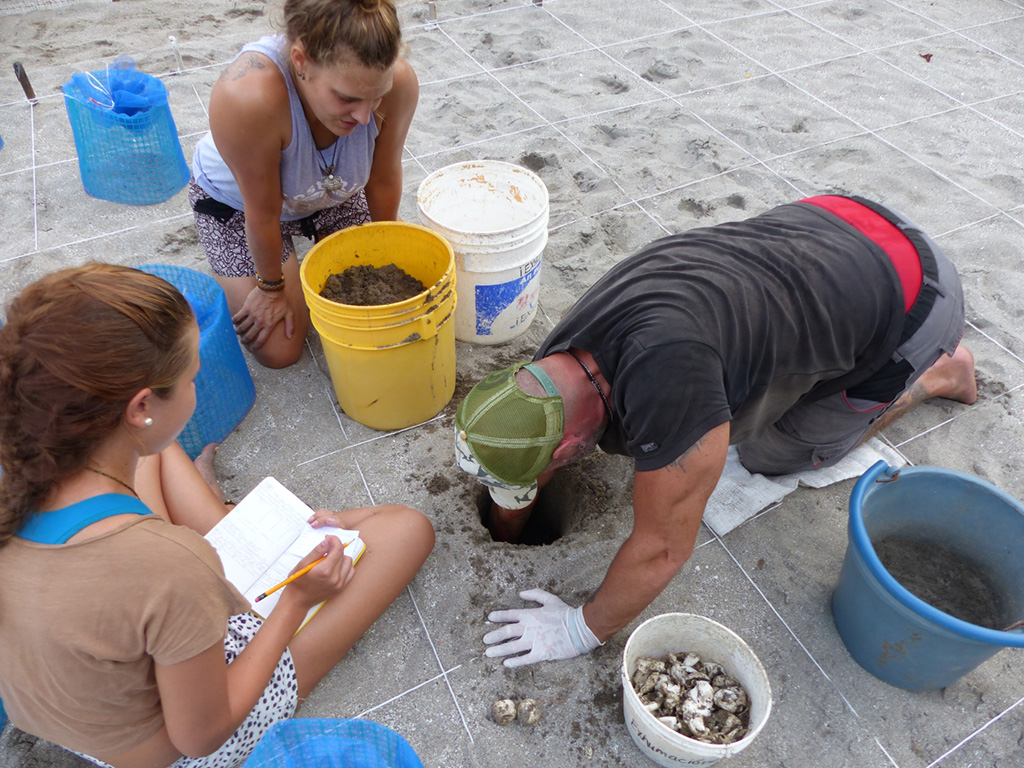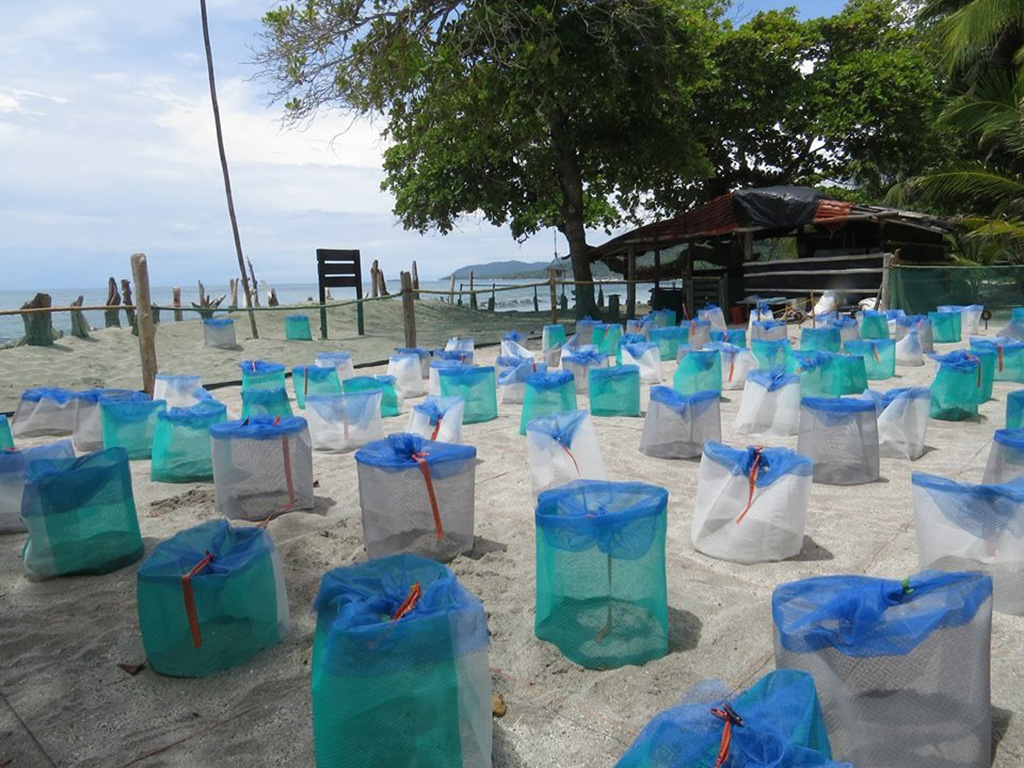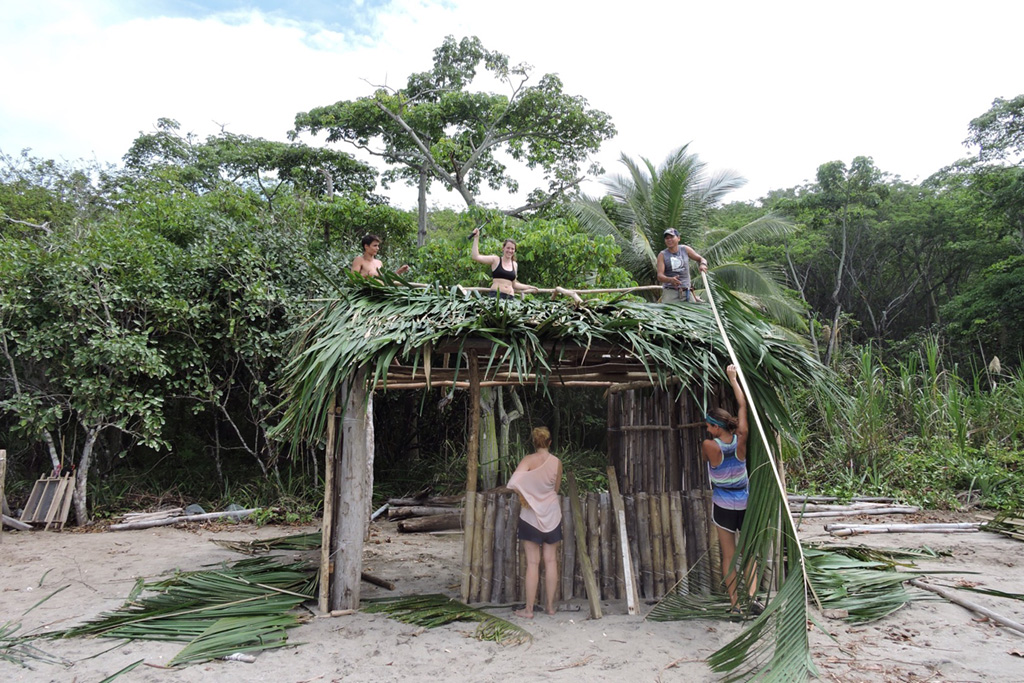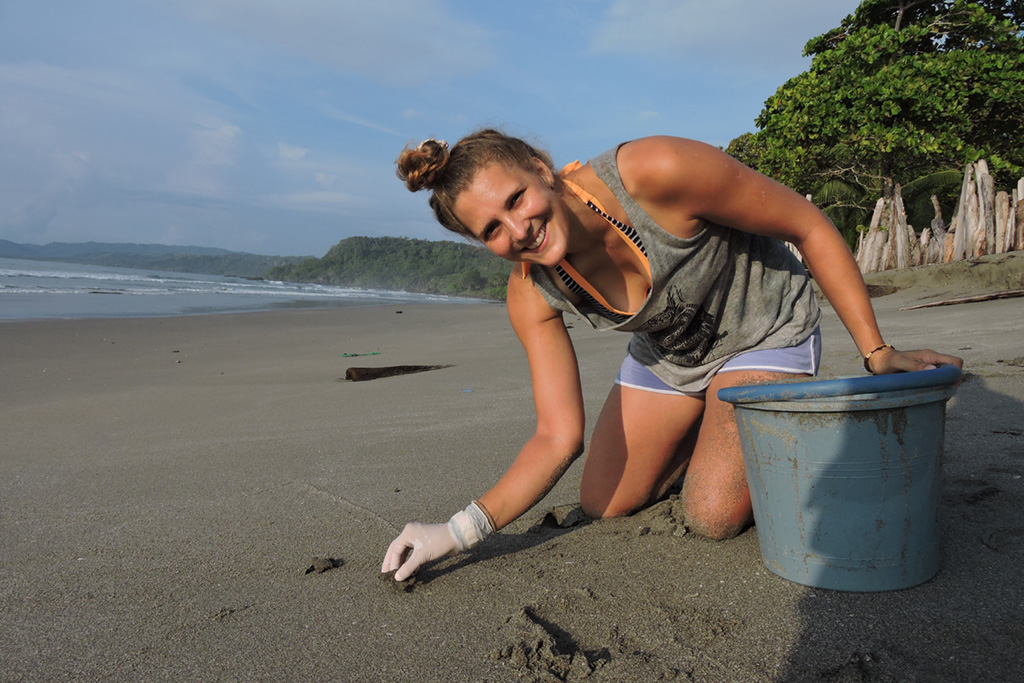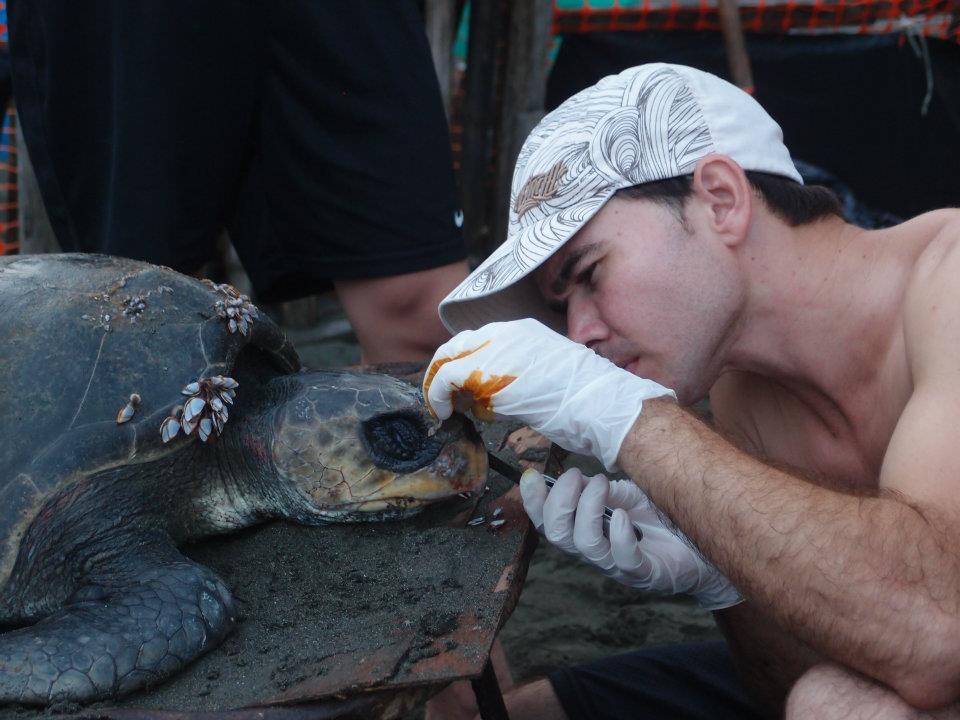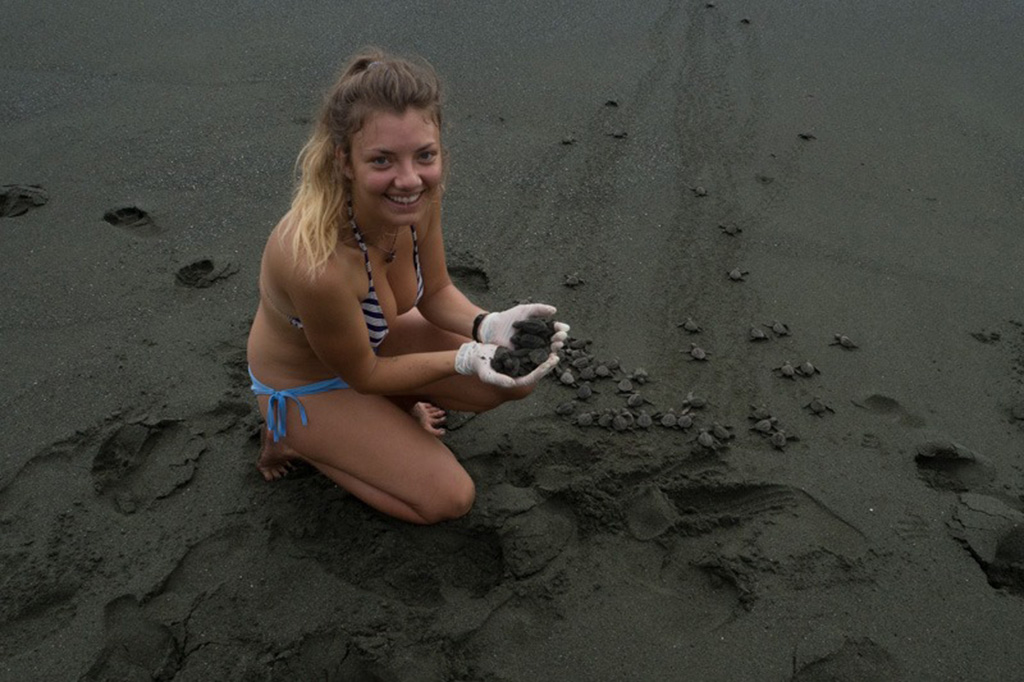Sea Turtles
Category
TurtleAbout This Project
Never seen a sea turtle from close up? Costa Rica is the hotspot for egg-laying of several sea turtle species. Dozens come to the Pacific and Caribbean coast to lay their eggs. A total of 4 species of sea turtles are endangered and need to be protected. Experience the world’s largest marine turtle, the leatherback turtle, up close on the wild unspoiled beaches of Costa Rica! Start your unforgettable adventure. Go wild!
Quick Facts
Locations: Pacific and Caribbean coast
Availability: Depending on project location,
mostly from June to March
Minimum stay: 2 weeks
Work time: 6 days/ week
Accommodation: Shared room in Volunteer house
or camp
Food: Full board 3 meals/ day
About the project
Costa Rica is one of the most intensive nesting sites for sea turtles in the world. Every year thousands of turtles return to the beaches of the Pacific and Caribbean coast to nest and lay their eggs. Natural enemies, but also poachers who are on a quick win with the eggs, preventing the baby turtles from hatching. Adult turtles also get killed for their shell which is used for jewelry while coming on land to lay their eggs. As a volunteer, you help marine biologists protect the endangered turtles, carry out measurements, and release the hatchlings into the oceans. You`ll participate in nightly patrols along the beach, guard the eggs and track the turtle population. Your workplace can be described as one of the most beautiful place in the world. Who else can claim that they go to the beach for work every day? The main species of turtles that come to shore are olive ridley, green, leatherback and hawksbill sea turtles. The work in this volunteer project is incredibly exciting, as some turtles can weigh up to 700 kg and will impress you with their gigantic shells.
Your tasks
– Nocturnal patrols along the beaches
– Data collection: identification / measurement of
turtles
– Collection and relocation of the eggs in hatchery
– Monitoring of nests and turtles eggs
– Appropriate release of turtle babies
– Beach cleaning and marking
Accommodation
You will live directly in the protected area of the projects with biologists and other volunteers. The camps and volunteer houses are usually located directly on the beach and have very simple conditions, sometimes without hot water or electricity. Most protection projects now have solar panels for electricity for charging cameras and telephones. Usually the projects are also remote and it may take a while to get to the next village. However, in the middle of nature, you will fall asleep with the sound of the waves and be awakened by howler monkeys . You will get full board with 3 meals a day.
Costs for participation in this project




